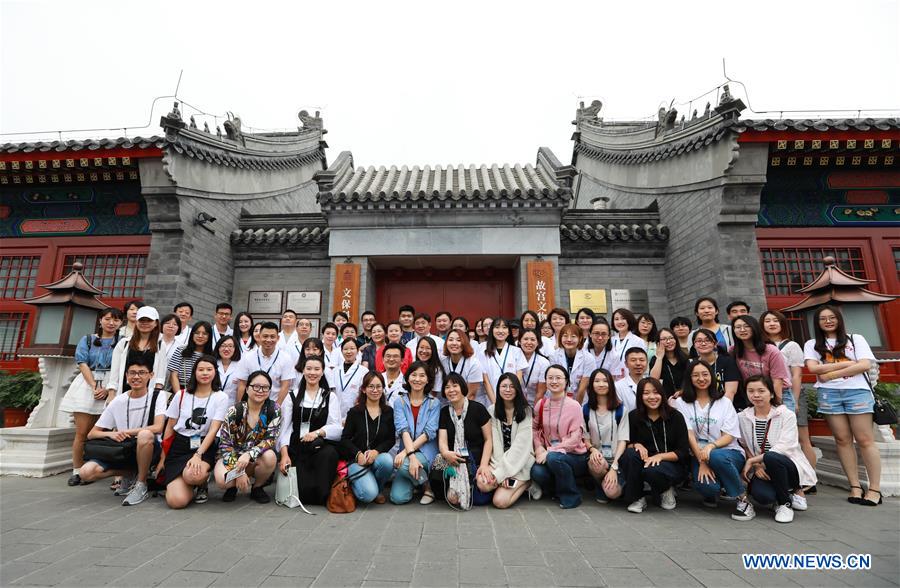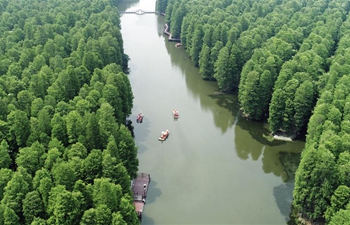
Visitors and volunteers pose for a group photo outside a hospital for conservation in the Palace Museum in Beijing, capital of China, June 9, 2018. The hospital for conservation opened to the public Saturday, as part of ongoing activities held for China's Cultural and Natural Heritage Day. The first visitors were a group of 40 people, who watched "doctors" repairing some of the museum collections, including calligraphy, painting, bronzeware and clocks, under the guidance of 24 volunteers. (Xinhua/Liu Chan)
BEIJING, June 9 (Xinhua) -- A hospital for conservation in the Palace Museum, also known as the Forbidden City, opened to the public Saturday, as part of ongoing activities held for China's Cultural and Natural Heritage Day.
The first visitors were a group of 40 people, who watched "doctors" repairing some of the museum collections, including calligraphy, painting, bronzeware and clocks, under the guidance of 24 volunteers.
"Opening the conservation studios to the public is a good way to raise public awareness of cultural heritage protection," said Li Husheng, a visitor from Shanghai.
"Watching the masters repairing some of the treasures is like watching an episode of 'Masters in the Forbidden City,' only more vivid," said Lu Jiajun, a Beijing International Studies University student, referring to a popular 2016 documentary.
"It's not like what I imagined before. I saw so much advanced equipment today and learned that restoration work is a science," said Gao Yuanyuan, a visitor from Beijing.
"We hope more people can learn the importance of cultural conservation by opening the hospital to the public," said Shan Jixiang, curator of the Palace Museum.
Established in December 2016, the hospital for conservation is located in the west of the Palace Museum. The facility covers 13,000 square meters and has the nation's most-advanced restoration studios.
The Palace Museum was home to the royal court between 1420 and 1912. Today, it houses more than 1.8 million sets of cultural relics.















